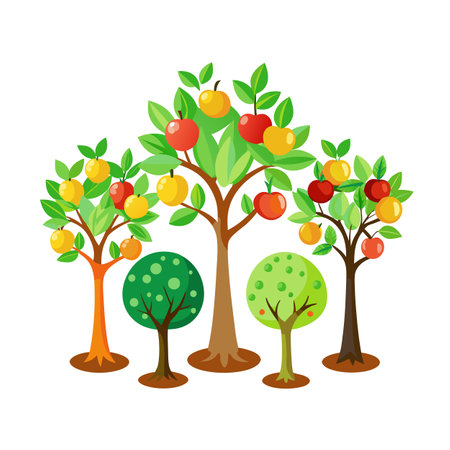Introduction: Urban Green Revolution in India
Across the sprawling metropolitan landscapes of India, a quiet yet powerful green revolution is taking root. In cities such as Mumbai, Delhi, Bengaluru, and Chennai, there is a marked increase in interest towards bonsai cultivation and the establishment of community gardens. This movement not only reflects an appreciation for nature amidst concrete jungles but also symbolizes the harmonious blend of India’s rich horticultural traditions with modern urban lifestyles. Bonsai clubs and community garden initiatives are becoming popular hubs where people from all walks of life gather to nurture plants, share knowledge, and celebrate ecological stewardship. As Indian city dwellers seek respite from urban stress and reconnect with nature, these green spaces are transforming into vibrant social and cultural centers. The growth of these movements highlights a return to roots — literally and figuratively — as ancient practices meet contemporary needs for sustainability and well-being.
2. The Bonsai Movement: Rooted in Indian Culture
The rise of bonsai clubs and community gardens in Indian cities is not just a reflection of global trends but also an expression of deep-rooted traditions unique to India. For generations, Indian plant lovers have been inspired by the ancient principles of harmony, sustainability, and reverence for nature, which align beautifully with the philosophy behind bonsai cultivation. While the art of bonsai originated in East Asia, its adaptation in India is influenced by longstanding practices such as Vriksha Ayurveda (the science of plant life) and sacred groves, where plants are nurtured with spiritual significance.
Indian urbanites are now enthusiastically embracing bonsai as both an aesthetic hobby and a mindful practice. This appeal can be attributed to several factors:
| Appeal Factor | Indian Context |
|---|---|
| Connection to Nature | Bonsai offers city dwellers a way to reconnect with greenery amidst urban density. |
| Cultural Resonance | Ancient texts like Vriksha Ayurveda promote plant care, aligning with the principles of bonsai. |
| Sustainable Practices | Traditional water-saving and organic methods are adapted into modern bonsai care. |
| Aesthetic Value | Bonsai trees enhance home decor while reflecting Indias love for artistic expression. |
Moreover, many Indian bonsai enthusiasts blend global techniques with local wisdom. For example, species native to the subcontinent—such as Ficus religiosa (Peepal), Azadirachta indica (Neem), and Banyan—are frequently chosen for their resilience and cultural symbolism. Clubs often encourage members to use eco-friendly materials and sustainable practices borrowed from traditional gardening wisdom.
Adaptation of Global Practices in Indian Settings
While international bonsai styles inspire Indian practitioners, there is a growing trend to customise techniques according to regional climates and available resources. Workshops conducted in Hindi, Tamil, Bengali, and other regional languages make knowledge accessible to wider communities. Many urban gardeners integrate rainwater harvesting and composting into their routines, reflecting the broader shift towards sustainability within Indian cities’ green spaces.
Bonsai and Community Bonding
Bonsai clubs serve as platforms for sharing stories, exchanging saplings, and learning from elders who bring indigenous insights into plant care. These gatherings foster a spirit of collaboration reminiscent of traditional community gardens that were once central to Indian neighbourhoods. By nurturing miniature trees and communal relationships alike, the bonsai movement celebrates both heritage and innovation.

3. Community Gardens: Nurturing Connections and Sustainability
Across India’s rapidly urbanising cities such as Mumbai, Bengaluru, and Delhi, the rise of community gardens has become a symbol of collective spirit and ecological awareness. In bustling neighbourhoods where space is a luxury, residents unite to transform vacant plots, terraces, or housing society corners into thriving green sanctuaries. These collaborative efforts go beyond just growing vegetables or flowers—they cultivate a deep sense of belonging and shared responsibility among diverse groups.
Urban Collaboration for Green Spaces
In metros like Mumbai’s Andheri or Bengaluru’s Indiranagar, local communities often come together—sometimes guided by NGOs or resident welfare associations—to design and maintain these gardens. Residents contribute their time, resources, and traditional knowledge, embracing age-old Indian farming practices like mixed cropping and composting alongside modern sustainable techniques. This collective participation strengthens social ties and nurtures a ‘vasudhaiva kutumbakam’ (the world is one family) ethos within the urban fabric.
Promoting Biodiversity in City Life
Community gardens play a crucial role in supporting biodiversity amidst concrete landscapes. By planting indigenous species—such as tulsi, neem, marigold, and moringa—urban gardeners attract pollinators like butterflies and bees while preserving local flora. The gardens become microhabitats for birds, insects, and small animals, echoing the biodiversity found in rural India. These green pockets serve as living classrooms for children, reviving traditional ecological wisdom in new generations.
Sustaining Urban Lifestyles through Green Initiatives
The movement towards sustainable living is at the heart of India’s community gardening culture. Composting kitchen waste, rainwater harvesting, and natural pest control methods are widely adopted to reduce environmental impact. Many city dwellers discover the joy of harvesting their own spinach (palak), okra (bhindi), or herbs (dhaniya), reducing dependence on market produce laced with chemicals. The emphasis on sustainability resonates with Indian values of ‘paryavaran suraksha’ (environmental protection), inspiring more citizens to embrace eco-friendly habits despite the pressures of metropolitan life.
4. Growth of Bonsai Clubs: Sharing Knowledge and Tradition
The emergence of bonsai clubs in Indian cities is a testament to the growing love for mindful, sustainable plant care among urban dwellers. These clubs are more than just hobby groups; they serve as vital hubs where individuals from diverse backgrounds unite to nurture miniature trees and share the rich legacy of bonsai art. In cities like Bengaluru, Mumbai, Delhi, and Chennai, bonsai enthusiasts gather regularly to exchange traditional wisdom, practical tips, and local innovations, making the culture both rooted and dynamic.
Workshops and Local Gatherings
Bonsai clubs frequently organize hands-on workshops led by seasoned experts or passionate hobbyists. Such workshops cover topics ranging from basic pruning techniques to advanced soil mixes suited for India’s varied climate zones. These gatherings also celebrate Indian festivals—like Diwali or Holi—by introducing thematic displays and encouraging community participation. The spirit of “learning by doing” is central, reflecting India’s age-old guru-shishya (teacher-disciple) tradition.
Popular Activities in Indian Bonsai Clubs
| Activity | Description | Frequency |
|---|---|---|
| Monthly Meetups | Members discuss progress, share cuttings, and address challenges. | Once a month |
| Skill Workshops | Hands-on learning sessions on styling, wiring, and repotting. | Quarterly |
| Themed Exhibitions | Showcasing bonsai during local festivals and city fairs. | During major festivals |
| Plant Swaps | Exchange of native saplings and bonsai starters among members. | Seasonal |
| Guest Talks | Inviting experts for lectures on organic practices and sustainability. | Bi-annual |
The Role of Social Media Communities
The digital era has further fueled the rise of bonsai culture. WhatsApp groups, Facebook pages, and Instagram collectives act as virtual gardens where advice flows freely—whether it’s about combating pests with homemade neem oil sprays or celebrating a successful flowering. These online platforms connect enthusiasts from Kolkata to Kochi, breaking geographic barriers while preserving the local flavour of each region’s approach to bonsai care.
Bridging Tradition and Modernity
Bonsai clubs in Indian cities embody a unique blend of tradition and innovation. By integrating indigenous plant species like ficus, tamarind, or banyan into their collections and focusing on natural farming techniques—such as using cow dung manure or rainwater harvesting—they promote sustainability rooted in Indian wisdom. Through collective action and knowledge sharing, these clubs ensure that the art of bonsai not only survives but thrives in modern India’s ever-evolving urban landscape.
5. Traditional Wisdom Meets Modern Practices
Urban gardening in Indian cities is experiencing a beautiful fusion of time-honoured agricultural knowledge with modern sustainability practices. Many bonsai clubs and community gardens are integrating traditional Indian organic farming principles into their routines. These groups often encourage the use of age-old techniques like using cow dung, neem cakes, and natural manure to nourish plants, reflecting an ethos rooted in ancient Vedic agriculture. Alongside these methods, natural composting practices such as vermicomposting—where earthworms convert organic waste into nutrient-rich compost—are gaining traction. This approach not only recycles kitchen and garden waste but also enhances soil fertility without chemical additives.
Water conservation remains a cornerstone of Indian agricultural wisdom, especially given the frequent water scarcity in urban areas. Techniques like mulching, drip irrigation, and rainwater harvesting are being adopted by both bonsai enthusiasts and community gardeners. These methods help reduce water usage and ensure that precious resources are used efficiently, a practice deeply respected in Indian culture.
A significant aspect of this integration is the conscious selection and nurturing of indigenous plant species. Urban gardeners are rediscovering the resilience of native flora such as Tulsi, Hibiscus, Neem, and various medicinal herbs, which are better adapted to local climates and require less maintenance than exotic species. By favouring indigenous plants, communities support biodiversity and create sustainable green spaces that echo Indias ecological heritage.
This harmonious blend of tradition and innovation enables Indian city dwellers to nurture living spaces that are both environmentally responsible and culturally meaningful. The result is a new urban gardening movement—one that honours the wisdom of the past while embracing practical solutions for the future.
6. Community Impact: Health, Ecology, and Social Harmony
In the heart of India’s vibrant cities, bonsai clubs and community gardens are blossoming as powerful agents of positive change. These green initiatives not only add a touch of nature to urban landscapes but also foster holistic well-being among residents. Through collective gardening efforts and shared appreciation for miniature tree art, urban communities experience a profound improvement in air quality. The presence of carefully nurtured plants helps absorb dust and pollutants, making the local environment more breathable—a crucial benefit in bustling metropolises like Mumbai, Delhi, and Bengaluru.
Enhancing Urban Health & Mental Wellbeing
Spending time amidst greenery has become an antidote to the fast-paced city lifestyle. Members of bonsai clubs and participants in community gardens often report reduced stress levels and improved mental health. Gardening activities such as planting saplings or shaping bonsai trees offer therapeutic value, promoting mindfulness that aligns with traditional Indian philosophies like yoga and Ayurveda. Moreover, these spaces encourage regular physical activity, contributing to better cardiovascular health and overall fitness among all age groups.
Strengthening Local Food Security
Community gardens in India are increasingly focused on growing organic vegetables, medicinal herbs, and traditional crops. This movement not only revives indigenous agricultural knowledge but also supports local food security by providing fresh produce right in the neighbourhoods. Residents get access to healthy, chemical-free food options while reducing their dependence on market supply chains—an especially valuable advantage during times of crisis such as lockdowns or supply shortages.
Fostering Cross-Generational Bonds & Social Harmony
Bonsai clubs and community gardens serve as intergenerational meeting grounds where elders share wisdom about traditional plant care and youngsters bring new energy and digital know-how. These shared activities bridge gaps between generations, building respect for heritage and nurturing a sense of unity within diverse communities. Festivals like Van Mahotsav or annual harvest celebrations become occasions for collective joy, reinforcing the Indian ethos of ‘Vasudhaiva Kutumbakam’—the world is one family.
Ultimately, the growth of bonsai clubs and community gardens in Indian cities stands as a testament to how nature-based initiatives can enhance not just ecological balance but also social wellbeing. By cultivating green corners amid concrete jungles, urban dwellers are sowing seeds of harmony, sustainability, and hope for future generations.
7. The Road Ahead: Expanding Green Horizons in Indian Cities
As we look to the future, the journey of bonsai clubs and community gardens in Indian cities is poised for significant growth and transformation. With increasing urbanisation, there lies an urgent need to reimagine our relationship with nature and green spaces. Bonsai art and community gardening are no longer just hobbies; they are powerful movements that can redefine urban living in India.
Envisioning a Greener Urban Tomorrow
The vision for Indian cities includes expanding green cover through more rooftop gardens, vertical plantings, and public parks infused with local flora and miniature landscapes. By nurturing indigenous species through bonsai, urban dwellers can preserve biodiversity and create resilient ecosystems even in compact city spaces. Community gardens, often rooted in traditional practices like “Bagicha” and “Bari,” offer opportunities for neighbours to unite, share knowledge, and enjoy the fruits of collective effort.
Bolstering Ecological Balance
The expansion of these green initiatives goes beyond aesthetics; it strengthens ecological balance within cities. Increased greenery helps reduce air pollution, regulate temperature, and support native pollinators such as bees and butterflies. When city residents adopt natural farming methods—eschewing chemical fertilisers for organic compost—they contribute to soil health and water conservation, echoing age-old Indian wisdom about sustainable living.
Strengthening Community Bonds
Bonsai clubs and community gardens foster a sense of unity across diverse backgrounds. From senior citizens sharing stories under neem trees to children learning about life cycles in kitchen gardens, these spaces are crucibles for intergenerational learning and social harmony. Such shared experiences rekindle the traditional Indian ethos of “Vasudhaiva Kutumbakam”—the world is one family—instilling pride and responsibility towards our environment.
Hopes & Aspirations
Looking ahead, the hope is that every Indian city will nurture its own network of bonsai enthusiasts and vibrant community gardens. Municipal bodies, schools, resident welfare associations, and local businesses can collaborate to provide resources, workshops, and space for these movements to thrive. With grassroots participation and policy support, we can collectively expand our green horizons—making Indian cities not just smarter but also greener, healthier, and more harmonious places to live.


